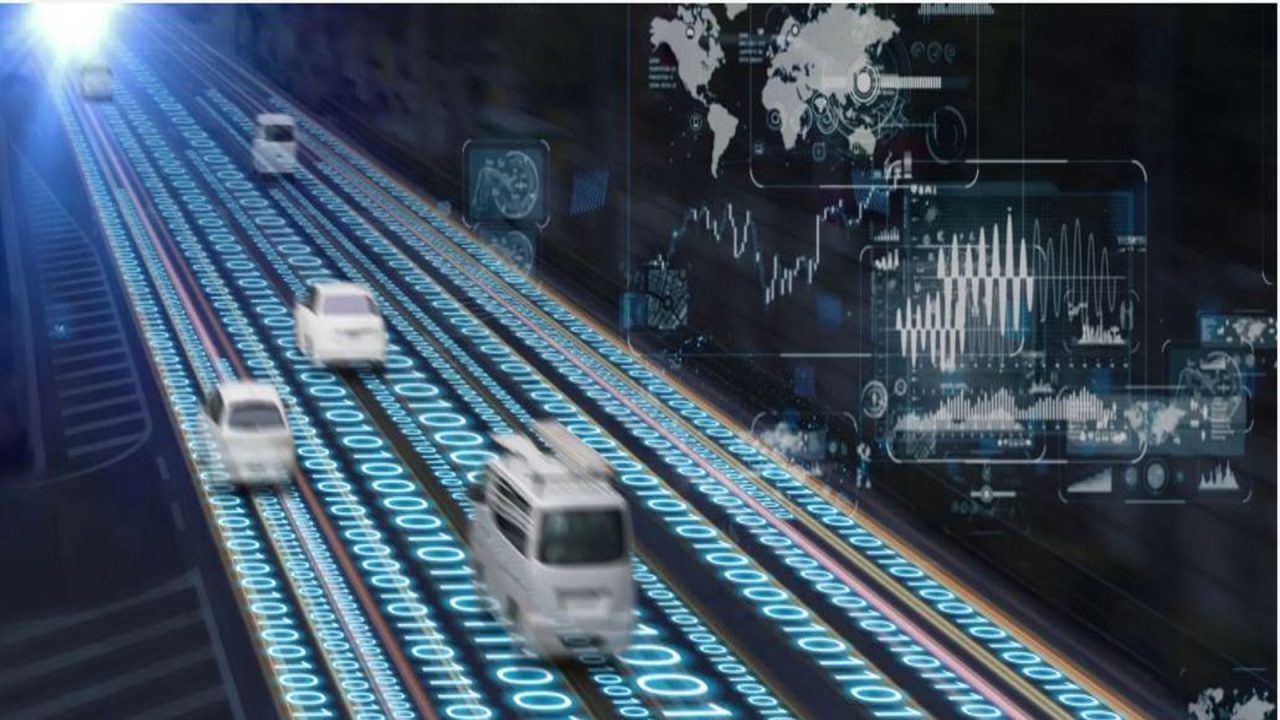In this Article
Introduction
As urban populations grow, the pressure on existing transportation infrastructure intensifies. Traffic congestion, pollution, and road safety are major concerns that impact the quality of urban life. Smart city traffic management systems offer innovative solutions to these problems by leveraging advanced technologies to optimize traffic flow, reduce congestion, and improve overall mobility. This article explores how smart traffic management systems improve urban transportation.
Ready to transform your city’s transportation? Explore how smart traffic management systems can enhance efficiency and sustainability. Take the first step towards a smarter future for urban mobility today.
The Components of Smart City Traffic Management Systems
Smart city traffic management systems are built on a foundation of interconnected technologies that work together to monitor, analyze, and manage traffic in real time. Here are the core components of these systems:
- Adaptive Traffic Signals: Intelligent and adaptive traffic signals use real-time data to adjust signal timings based on current traffic conditions. By responding to actual traffic flow rather than fixed schedules, these signals help reduce waiting times at intersections and minimize congestion. For example, in Los Angeles, the Adaptive Traffic Control System (ATCS) has reduced travel times by up to 12% on some routes. Intelligent traffic signals can also prioritize emergency vehicles and public transport, improving response times and public transport efficiency.
- Traffic Sensors and Cameras: A network of sensors and cameras is deployed across the city to collect traffic volume, speed, and incident data. This data monitors traffic patterns, detects anomalies, and provides insights for traffic management decisions. These devices can include loop detectors, radar sensors, and high-definition cameras, all working together to create a comprehensive picture of traffic conditions. The deployment of these sensors enables the detection of traffic violations, real-time monitoring of road conditions, and the ability to respond quickly to accidents or other incidents.
- Traffic Management Centers: Centralized Traffic Management Centers Traffic management centers (TMCs) serve as the nerve center for smart traffic systems. Here, data from sensors and cameras is analyzed, and traffic control strategies are implemented. TMCs can coordinate incident responses, manage traffic signals, and provide real-time information to drivers through variable message signs (VMS) and mobile apps. For instance, the TMC in Singapore uses advanced algorithms to predict traffic congestion and proactively manage traffic flow. These centers also facilitate communication and coordination between various city departments, such as emergency services, public transportation, and road maintenance crews, ensuring a unified response to traffic-related issues.
- Vehicle Connectivity: Connected vehicles and infrastructure vehicles equipped with communication technologies that can share data with traffic management systems and other vehicles. This connectivity enables more efficient routing, better coordination at intersections, and enhanced safety features such as collision avoidance. Technologies such as Vehicle-to-Infrastructure (V2I) and Vehicle-to-Vehicle (V2V) communication play a crucial role in this integration. The European C-Roads Platform is an example where several countries collaborate to implement and harmonize C-ITS (Cooperative Intelligent Transport Systems) services. This connected infrastructure can also support autonomous vehicles, providing real-time data and support for navigation and decision-making.
- Traffic Forecasting: Predictive analytics and machine learning Predictive analytics and machine learning algorithms can forecast traffic patterns based on historical data and real-time inputs. These technologies enable proactive traffic management by anticipating congestion points and adjusting control measures accordingly. For example, using machine learning in traffic prediction has allowed cities like Boston to implement preemptive measures to reduce congestion before it happens. These advanced analytics can also identify long-term trends and potential infrastructure needs, aiding city planners in making data-driven decisions about future developments and improvements.
- Integrated Public Transportation Systems: Smart traffic management systems also integrate public transportation data to optimize bus and train schedules, ensuring synchronization with traffic signals to reduce delays. Cities like Barcelona have successfully implemented integrated systems that improve the punctuality and efficiency of public transport, encouraging more residents to use these services over private vehicles. Integration with ride-sharing services and other mobility options further enhances the flexibility and convenience of urban transportation networks.
- Dynamic Pricing and Congestion Charging: Dynamic pricing models and congestion charging systems can be used to manage demand and reduce traffic during peak hours. By varying tolls and parking fees based on real-time traffic conditions, cities can encourage drivers to travel during off-peak times or use alternative modes of transportation. London’s Congestion Charge Zone is a well-known example that has successfully reduced traffic volume and pollution in the city center.
- Smart Parking Solutions: Smart parking systems use sensors and mobile applications to provide real-time information on available parking spaces, reducing the time drivers spend searching for parking and thereby decreasing overall congestion. These systems can also facilitate dynamic pricing for parking, encouraging more efficient use of available spaces.
The Benefits of Smart City Traffic Management Systems
Implementing smart traffic management systems offers numerous benefits for cities and their residents. Here are some of the most significant advantages:
- Reduced Congestion: Smart traffic systems can significantly decrease congestion and shorten travel times by optimizing traffic flow and reducing bottlenecks. This leads to a more efficient transportation network and improved productivity for commuters. Cities like Stockholm have seen up to a 20% reduction in travel times after implementing congestion pricing combined with smart traffic management.
- Enhanced Road Safety: Real-time monitoring and adaptive signal control can help reduce the likelihood of accidents. Additionally, connected vehicle technologies enable faster emergency response and better coordination in case of incidents. A study in New York City found that the use of intelligent traffic systems led to a 10% reduction in accident rates. Furthermore, features such as collision avoidance systems and automated emergency braking in connected vehicles contribute to safer roads.
- Lower Emissions and Improved Air Quality: Smoother traffic flow and reduced idling at intersections contribute to lower vehicle emissions. This, in turn, helps improve air quality and reduce the environmental impact of urban transportation. In Copenhagen, GLOSA reduced fuel consumption and CO2 emissions by 5-10%. Smart traffic systems promote public transport use, decreasing reliance on private vehicles for lasting environmental benefits.
- Informed Decision-Making: The vast amount of data collected by traffic management systems provides valuable insights for city planners and policymakers. This information can be used to make informed decisions about infrastructure investments, traffic policies, and urban development. Data-driven decisions have led cities like Amsterdam to optimize bike lanes and public transport schedules, significantly improving urban mobility. The continuous feedback loop provided by real-time data allows for the ongoing refinement and improvement of traffic management strategies.
- Public Satisfaction: Efficient traffic management and improved public transportation can lead to higher levels of public satisfaction. When residents experience shorter travel times, safer roads, and more reliable public transport, their overall quality of life improves. This, in turn, can enhance the city’s reputation and attractiveness to new residents and businesses. A well-managed transportation system can also support economic growth by facilitating the smooth movement of goods and services.
- Economic Benefits: Reducing traffic congestion and improving transportation efficiency can have significant economic benefits. Lower travel times and improved reliability boost productivity, while enhanced road safety cuts costs from accidents. Smart traffic systems also attract businesses and investors seeking cities with modern infrastructure and high quality of life.
- Scalability and Future-Proofing: Smart traffic management systems are designed to be scalable and adaptable to future developments. As cities grow and technology advances, these systems can evolve to meet new demands, integrating emerging technologies like autonomous vehicles and advanced sensor networks. This scalability ensures that investments in smart traffic management continue to provide benefits well into the future.
Conclusion
Smart city traffic management systems offer a transformative approach to addressing urban mobility challenges. By integrating advanced technologies and leveraging real-time data, these systems optimize traffic flow, enhance road safety, and reduce environmental impacts. Investing in smart traffic management solutions will be crucial for creating more livable, sustainable urban environments as cities evolve. The benefits extend beyond transportation, contributing to improved public health, economic growth, and overall quality of life. Furthermore, these systems can adapt to changing traffic patterns, reducing congestion during peak hours and special events. They also enable quick responses to accidents and emergencies, minimizing delays and ensuring smoother traffic. The integration with smart infrastructure, such as connected vehicles and IoT devices, further amplifies the effectiveness of traffic management. As urban areas continue to grow, the need for intelligent traffic solutions becomes more pressing, making them a cornerstone of future urban planning. The widespread adoption of smart traffic management systems is essential for building future-ready cities that prioritize efficiency and sustainability.
How Can We Help?
At AlphaX, we specialize in providing innovative solutions for smart city traffic management. Our advanced technologies and expertise in traffic systems integration can help cities achieve seamless mobility and improved transportation efficiency. From intelligent traffic signals to traffic management centers, our solutions are tailored to each city’s needs. Our experts work with city planners to develop customized strategies for specific traffic challenges. To learn more about our services, visit our website or contact us for personalized assistance.
References
Related Blog Posts
How Smart Cities Connect: Getting Started with Edge AI and IoT Technology
How to Get Started with Edge AI and IoT Technologies in Smart Cities: Overcoming Integration Challenges In recent years, the concept of smart cities has evolved from a futuristic Read More
5 Step Strategy: Ensuring Security and Privacy in 15-Minute Smart Cities
Introduction Ensuring security and privacy in 15-minute smart cities is a critical challenge as urban areas become increasingly connected through IoT and edge AI technologies. These cities aim to Read More
What is a smart city and the challenge of legacy systems
How to Get Started with Integrating Legacy Systems in Smart Cities Smart cities are transforming urban landscapes by leveraging technology to improve the quality of life for residents. However, Read More




